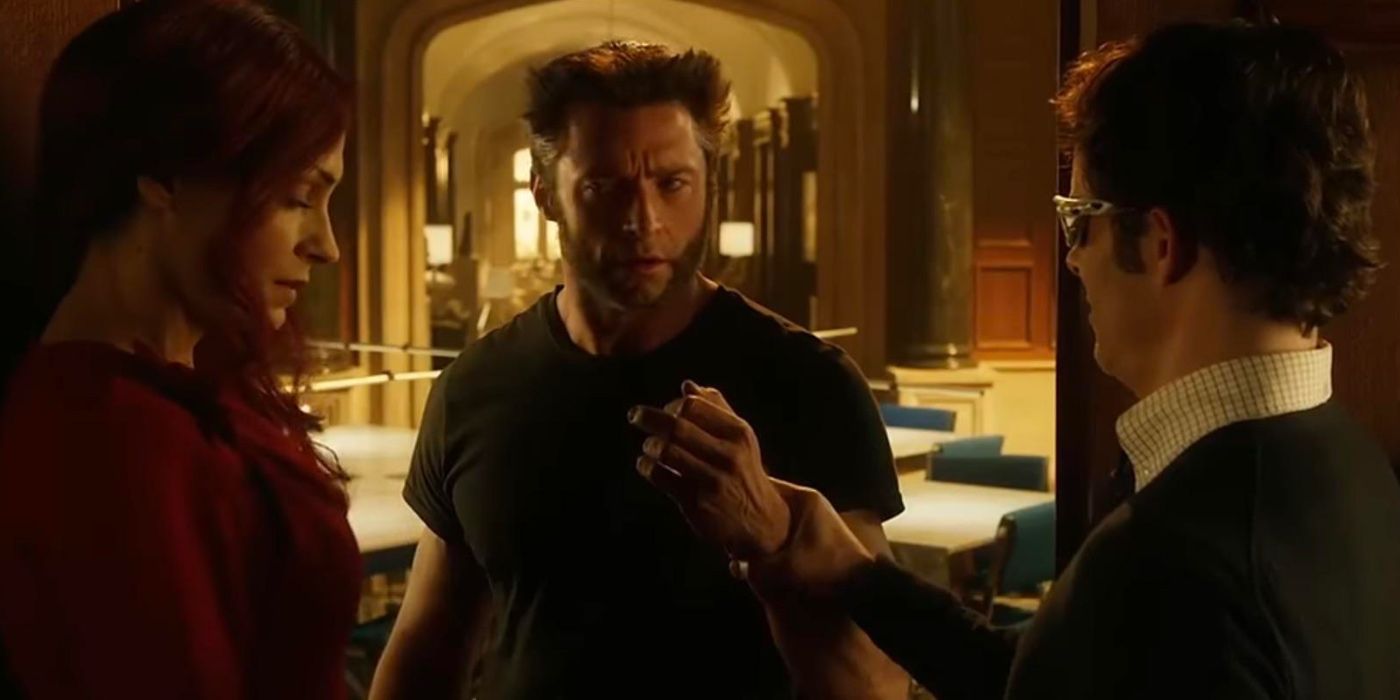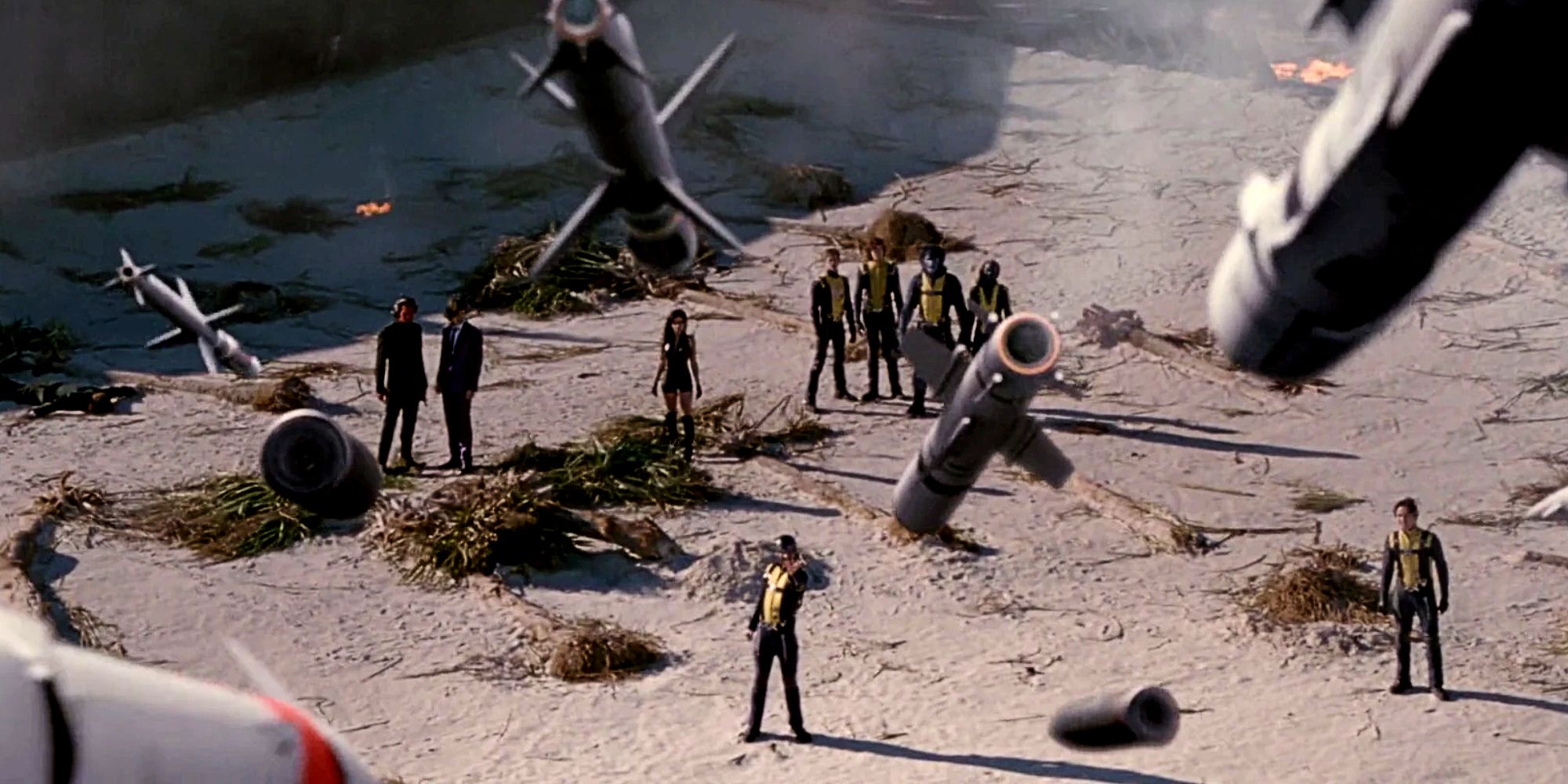
The X-Men prequels may have depicted the famed Marvel mutants in dynamic narratives, but watching them in hindsight reveals some less favorable aspects that Marvel should be cautious of while preparing for the MCU’s X-Men movie. The X-Men prequel series began with X-Men: First Class, which intended to depict the initial formation of the famed mutant heroes. This proved so popular that an entire movie franchise was established. While the X-Men prequels revitalized the franchise after the disappointing conclusion to the original trilogy, they were by no means perfect.
The original X-Men trilogy was followed by four prequel movies: X-Men: First Class, X-Men: Days of Future Past, X-Men: Apocalypse, and Dark Phoenix. Each of these depicted younger counterparts and character histories for classic X-Men characters, some of which remained connected with the original trilogy. With Fox’s X-Men franchise due to officially conclude in the MCU’s Deadpool & Wolverine, rewatching the prequel movies hence unveils some harsh realities.
10. The X-Men Prequels Had Too Much Wolverine
Wolverine Appeared In 6 X-Men Movies And 3 Solo Movies

While Hugh Jackman’s portrayal of Wolverine in the original X-Men trilogy and his solo Wolverine trilogy was undeniably exceptional, the prequel movies arguably relied too heavily on his character. While his cameo in X-Men: First Class added a fun touch, subsequent appearances felt repetitive, overshadowing opportunities for other characters to shine. Many fans anticipated a refreshing focus on characters like Kitty Pryde in X-Men: Days of Future Past, only to find Wolverine once again taking the lead.
By X-Men: Apocalypse, his appearances felt forced, detracting from the development of other team members. Jackman’s Wolverine was iconic, but his omnipresence in nearly every X-Men film limited the exploration of other compelling characters within the universe and became somewhat tiring. Diversifying the spotlight could have enriched the storytelling and offered audiences a broader perspective on the vast array of personalities within the X-Men mythos rather than falling back on an on-screen favorite.
9. The X-Men Prequels Rushed Dark Phoenix
The Dark Phoenix Saga Has Been Adapted To Live-Action Twice

The X-Men prequel movies rushed through the Dark Phoenix saga, failing to build a sufficient connection with the audience for Jean Grey. Introduced just one film prior, in X-Men: Apocalypse, Jean lacked the necessary development to evoke the emotional investment required for the iconic storyline in Dark Phoenix. In the comics, the Dark Phoenix saga capitalized on the reader’s affection for Jean, depicting the tragic corruption of the purest X-Men member.
By skimming over Jean’s character development, Dark Phoenix missed a crucial opportunity to explore her inner turmoil and the impact of her transformation on both the team and the audience. Without a strong foundation, the emotional weight of her journey was diluted, resulting in a less impactful portrayal of one of the most beloved arcs in X-Men lore. While the notorious Dark Phoenix plot hole, which countered X-Men: Apocalypse’s depiction of the Phoenix as innate powers within Jean Grey, made the movie feel poorly executed.
8. Mystique Should Have Become A Proper Villain
Mystique Is A Complex Villain In Marvel Comics

Mystique’s characterization in the X-Men prequels would have been more effective if she had been portrayed as a proper villain, rather than as a conflicted hero. While her actions in Days of Future Past hinted at her role as a mutant liberator, her portrayal as an X-Men member fighting to protect humans in the other movies contradicted her comic book persona. As the most prominent leader of the Brotherhood of Mutants, the prequel films missed an opportunity to depict Mystique’s descent into full villainy.
By showcasing Mystique’s internal struggle and gradual transformation into a formidable antagonist, the movies could have delved into the complexities of her character and offered a fresh perspective on mutant-human relations. A more faithful portrayal of Mystique as a cunning and manipulative villain would have added depth to the X-Men cinematic universe. It would have also connected the movies to her portrayal in the original X-Men trilogy.
7. The X-Men Prequels Changed Too Much From The Source Material
Many Classic Comic Book Stories Were Changed

The X-Men prequels diverged significantly from the original Marvel Comics source material, missing opportunities for faithful adaptation. Examples include Apocalypse’s powers being dramatically altered and Storm’s connection with him (instead of Shadow King) in X-Men: Apocalypse, Wolverine time traveling instead of Kitty Pryde in Days of Future Past, and Mystique’s childhood association with Xavier in First Class. Furthermore, downgrading Darwin’s powers to be killed by Sebastian Shaw in First Class was a deviation from his comic counterpart notably.
Unlike the Marvel Cinematic Universe, the X-Men prequels felt unfaithful to their roots, resulting in squandered opportunities to explore the rich lore and character dynamics established in the comics. While some deviations may have been made for cinematic purposes, the excessive alterations diminished the films’ authenticity and connection to the beloved source material. Indeed, some changes left many yearning for a more faithful adaptation of the X-Men universe that wouldn’t undermine essential characterizations.
6. The X-Men Prequels Didn’t Mirror Real-World Discrimination
X-Men Has Always Represented Marginalized Groups

The X-Men prequel movies fell short in fully exploring the metaphor of mutant discrimination as a reflection of real-world minority struggles. Throughout Marvel’s X-Men history, mutants have symbolized marginalized communities facing prejudice and persecution, echoing themes of racism, homophobia, and other forms of discrimination. While the original X-Men trilogy touched on these parallels, particularly through Iceman’s poignant “coming out” scene, the prequels missed opportunities to delve deeper.
Given the retro setting of the X-Men prequels, there was ample potential to center the narrative more around civil rights issues and draw stronger parallels with real-world struggles. By emphasizing these themes, the prequels could have heightened the relevance and impact of the X-Men’s struggle for acceptance and equality, resonating more profoundly with audiences and further cementing the franchise’s legacy as a powerful allegory for social justice. As such, it was only truly suggested in Days of Future Past, missing an opportunity to reflect the X-Men’s ethos.
5. The X-Men Prequel Timeline Approach Created Too Many Plot Holes
Each X-Men Prequel Is Set In A Different Decade

The X-Men prequel movies introduced significant plot holes in their timeline, especially evident through inconsistencies in character aging. Set in different decades, the films aimed to honor the rich history of the mutant heroes, yet failed to depict realistic aging among the characters. One glaring example is Havok joining the team in 1962 as a young man, only for his younger brother, Cyclops, to appear as a teenager twenty years later in X-Men: Apocalypse. Yet later in Dark Phoenix, the adolescent members are purportedly in their 20s and full-time X-Men members, but look the same as in Apocalypse.
While the films aimed to explore the origins of beloved characters and their evolution over time, the lack of aging among the cast rendered the different time settings indiscernible and needed to be explicitly stated in the narrative. Jean Grey’s Phoenix association is another major plot hole, while several other events disrupted the continuity of the original X-Men trilogy. These discrepancies detract from the cohesion of the storyline and raise questions about the continuity of the X-Men cinematic universe.
4. The X-Men Prequels Felt Too Disconnected
The Timeline Required Excessive Exposition

The X-Men prequel films suffered from a sense of disconnection, exacerbated by their use of different decades as settings. With each movie set in a distinct time period, excessive exposition was required to bridge the gap between them, leaving little room for character development and action. Additionally, certain characters’ actions were barely addressed at all. There is no discussion of what happened to Jean Grey between Apocalypse and Dark Phoenix, despite her dramatic transformation.
Had the X-Men prequel movies been placed closer together chronologically, they could have spent more time delving into character dynamics, relationships, and thrilling action sequences. By minimizing the need for exposition and focusing on the core elements of the story, the X-Men prequels could have created a more cohesive and engaging cinematic experience. This would have allowed audiences to become more invested in the characters and their journey throughout the series, rather than having to reestablish character dynamics.
3. The Prequels Focused Too Much On Xavier, Magneto, And Mystique
Xavier, Magneto, And Mystique Were the Only Characters to appear In All 4 X-Men Prequels

The X-Men prequels heavily favored the characters of Xavier, Magneto, and Mystique, often at the expense of other beloved mutants whom audiences were eager to see. While these three characters undoubtedly played significant roles in shaping the X-Men universe, their dominance overshadowed the potential for exploration of other compelling characters. Characters like Cyclops, Storm, Jean Grey, and Nightcrawler, were diminished in comparison to the central trio.
The X-Men prequels missed opportunities to delve into the rich backstories and dynamics of these characters. Hundreds of X-Men characters have appeared in Marvel Comics, yet those who did appear were relegated to secondary roles or mere background appearances. By expanding the focus to include a broader array of mutants and their stories, the prequels could have enriched the cinematic universe, offering audiences a more diverse and immersive experience closer to the ensemble nature of the X-Men comics.
2. The X-Men Prequels Wasted Its Villains
Each Prequel Included A Classic X-Men Villain

The X-Men prequel films squandered the potential of several formidable villains despite their stalwart popularity in X-Men comics. Emma Frost, with her cunning and telepathic abilities, deserved to take center stage as the main antagonist in a movie, showcasing her manipulative prowess and strategic brilliance. Dark Phoenix suffered a second underwhelming portrayal, failing to capture the epic scope and emotional depth of the iconic storyline.
The Sentinels, fearsome mutant-hunting robots, were relegated to brief appearances in future scenes in Days of Future Past, missing the opportunity for a more substantial confrontation. However, the most disappointing was Apocalypse, whose portrayal lacked the grandeur and menace associated with the X-Men villain. Downgraded and lacking in impact, Apocalypse failed to live up to his potential as a truly formidable foe, leaving audiences yearning for a more epic and satisfying interpretation of the ancient mutant.
1. The X-Men Prequels Disturbed The Continuity
Events Before Days Of Future Past Reset The Timeline, It Did Not Match The Original X-Men Trilogy

The X-Men prequels introduced numerous disruptions to the continuity established in the original trilogy, leading to inconsistencies and contradictions within the franchise. Xavier’s claim about Magneto’s telepathy-blocking ability being a result of him helping build Cerebro conflicted with the revelation in First Class of Magneto acquiring a specialized helmet for that purpose. Additionally, First Class suggested that it was in fact Beast who built Cerebro. While Beast’s role in developing a mutant “cure” throughout the prequels contradicted his stance against such measures in X-Men: The Last Stand.
Moreover, Xavier’s childhood friendship with Mystique and the timeline of his meeting with Magneto differed from the original trilogy’s portrayal. Banshee’s death between First Class and Days of Future Past clashed with the appearance of his daughter, Siryn, in X2: X-Men United. While Days of Future Past reset the timeline, events prior to this created inconsistencies between the original trilogy and the X-Men prequels.
